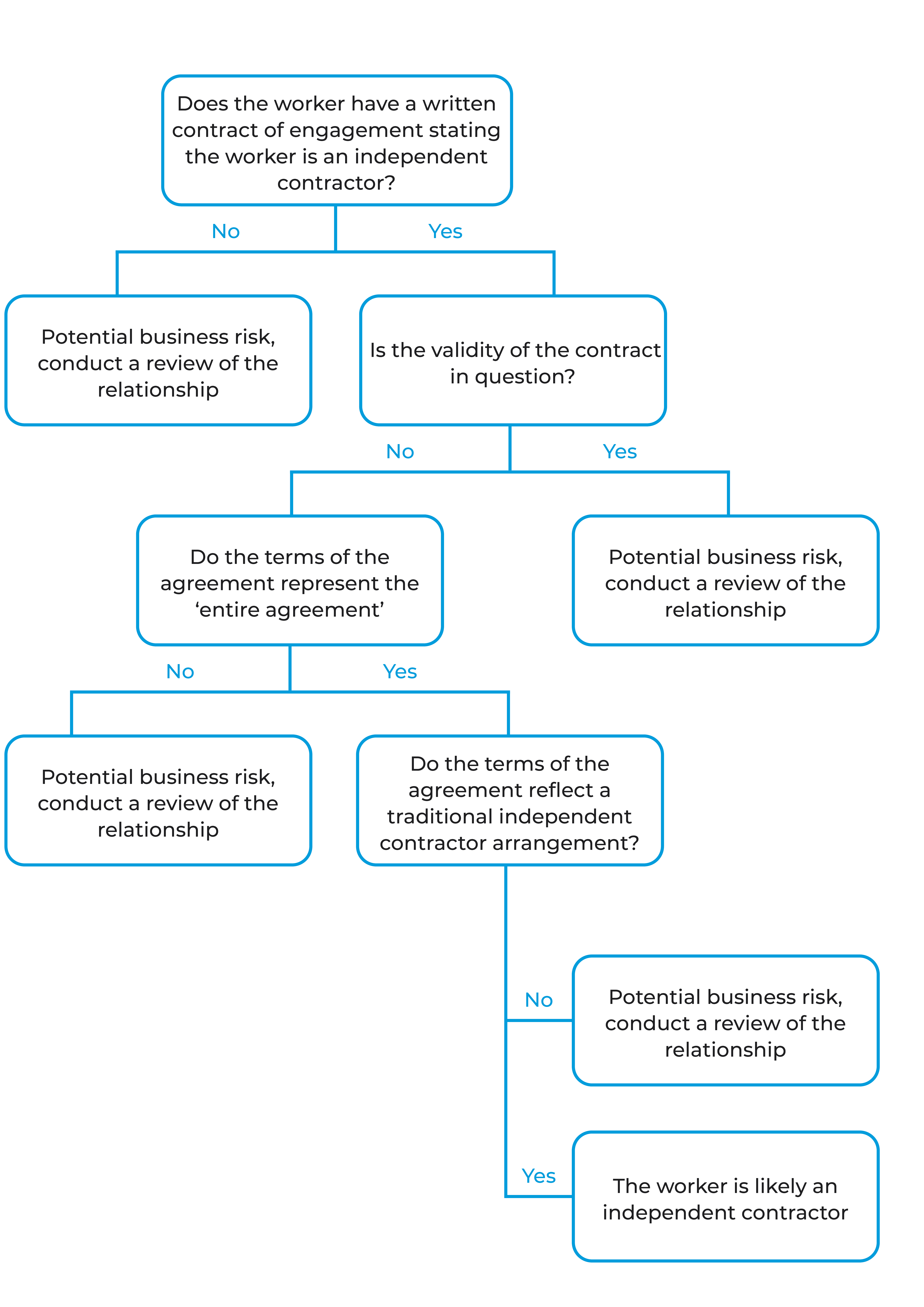07 March 2022
4 min read
Published by:

Until now, organisations have faced uncertainty when engaging workers as independent contractors.
In what has been a welcome relief to many businesses, last month the High Court in the two landmark decisions of Construction, Forestry, Maritime, Mining and Energy Union & Anor v. Personnel Contracting Pty Ltd [2022] HCA 1 and ZG Operations Australia Pty Ltd & Anor v. Jamsek & Ors [2022] HCA 2 (together, High Court Decisions) upheld the primacy of the terms of the written agreement as key in establishing the legal character of the relationship.
This has provided businesses with greater clarity and certainty.
The question of whether a worker is an independent contractor or an employee is complex.
The High Court has now placed a strong emphasis on the written agreement in determining the legal character of the relationship. If the rights and obligations written into that agreement point to an independent contractor relationship, and the agreement is not rendered ineffective because of a sham or illegality, then the legal character of the relationship is not affected by the way the agreement operates in practice.
As a result, according to the majority decision, unless a party seeks to challenge the efficacy of the contract, the courts are not empowered to consider the history of the party’s dealings to determine if the relationship is one of employment or independent contracting at law.
However, the High Court was not unanimous in the approach adopted. As the minority applied the then prevailing multi-factor test, it remains to be seen how courts will apply the decisions and to what extent the multi-factor test will still apply. You can watch this month’s 60 second legal refresh video here for a brief recap of the decisions, or our on-demand webinar here for a more in-depth discussion and the key takeaways.
In response to the High Court Decisions, we set out some key steps businesses can take.
1. Audit current engagements and written independent contractor agreements
Audit current contractor engagements and their written agreements to ensure contractors have not been provided with a ‘false label’ where the duties and obligations reflect an employment relationship.
Importantly, legislation in the areas of payroll tax, workers compensation and compulsory superannuation attach ‘employer-like’ obligations to principals in common law independent contractor relationships. As a result, regulators responsible for enforcing this legislation are likely to continue with an approach that looks beyond the written agreement to the nature of the relationship in assessing whether the relationship comes within the scope of the legislation.
2. Ensure each engagement is confirmed in a written agreement
All independent contractors should be engaged according to a written agreement, with terms that accurately reflect a principal contractor relationship. In the absence of a written agreement, organisations are at greater risk of a finding of employment.
A written agreement for a contractor should clearly define the nature and the terms and conditions of the relationship, including payment, termination and services to be provided.
Also, employers should consider the utility of obligations of the independent contractor in relation to confidential information, intellectual property and restraints of trade.
3. Review template independent contractor agreements
Review template independent contractor agreements to ensure the terms of the template reflect the principal/contractor relationship. For example, the template should not include any provisions where the independent contractor is subject to the direction and control of the principal and must comply with such directions.
Consider including boilerplate clauses, such as ‘entire agreement’ clauses. An ‘entire agreement’ clause aims to minimise the legal risk of a court considering oral terms agreed outside the written agreement.
To assist you in implementing these steps, we outline key questions to identify business risks when auditing current engagements:

If you have any questions, please contact us or send us your enquiry here.
Authors: Jennifer van Bronswijk, Megan Cant & Olivia Lawrence
Disclaimer
The information in this publication is of a general nature and is not intended to address the circumstances of any particular individual or entity. Although we endeavour to provide accurate and timely information, we do not guarantee that the information in this article is accurate at the date it is received or that it will continue to be accurate in the future.
Published by: